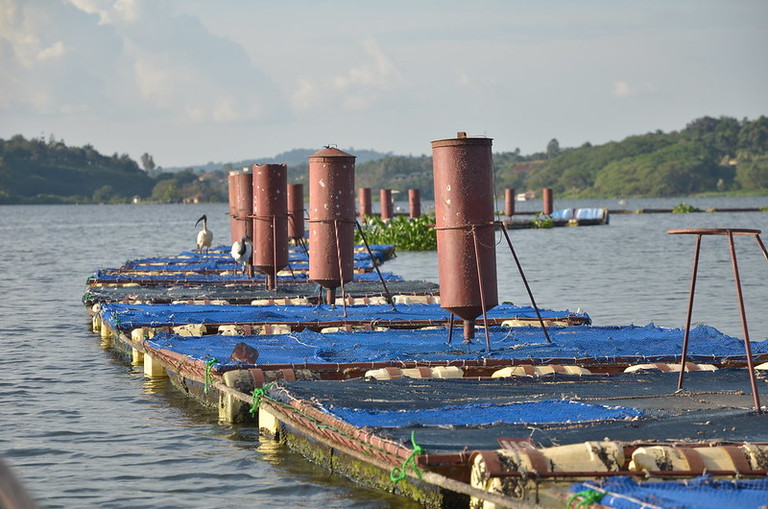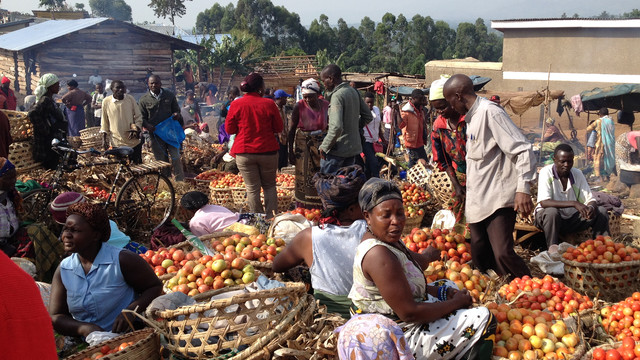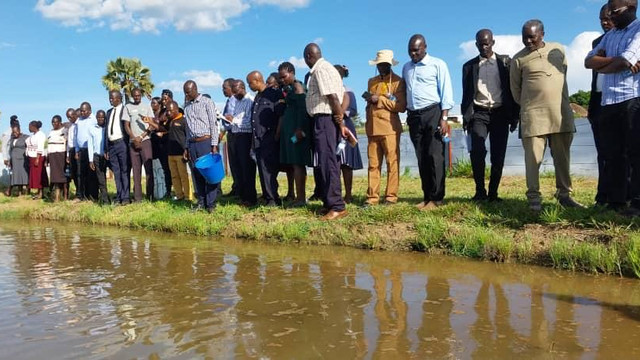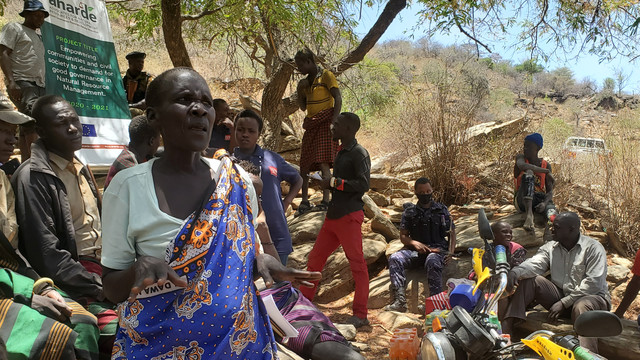Lessons for building a natural capital legacy
Musing on the lessons learnt at the end of a project in Uganda about how to use natural capital accounts to inform policymaking, Rosalind Goodrich considers what it takes to build a legacy that will inform decision-making for years to come.


Tilapia cages on Lake Victoria, Uganda (Photo: Jens Peter Tang Dalsgaard via Flickr, CC BY-NC-ND 2.0)
The process of creating natural capital accounts and the jump to using them to inform decision-making is a perfect example of an information value chain. It starts with complex collections of data that are manipulated, analysed and then represented through infographics, graphs and spatial maps.
Now comes the point of interpretation – what does it all mean?
‘Tourist numbers are going down, agricultural yields are declining, aquaculture harvests are increasing…’ – it’s not just about numbers and trends, it’s also about the implications for future development strategies, for businesses, communities and for people.
And how do these numbers, graphs and maps help technical people communicate the account findings so they hit home with civil servants, with decision-makers and with the general public? Do people even know what natural capital accounting (NCA) is?
If they don’t, they probably won’t appreciate the significance of the accounts or recognise their responsibility for responding to what they reveal.
And that’s where the project ‘Integrating natural capital into sustainable development decision-making in Uganda’ comes in.
From data to delivery; from technical information to policy action
The project team from the National Environment Management Authority (NEMA), the Uganda Bureau of Statistics (UBoS) and the National Planning Authority (NPA), working with the UN Environment Programme World Conservation Monitoring Centre (UNEP-WCMC), IIED and the Institute for Development of Environmental-Economic Accounting (IDEEA), has spent three years working with technical specialists to collect and present data.
The team has built relationships with potential users of that data, and guided them to realise for themselves the significance of the information for delivering the Ugandan National Development Plan, Green Growth Development Strategy and National Biodiversity Strategy and Action Plan.
Building awareness of what NCA is, how it is done and how the information it yields can be used, the team has brought momentum to the approach. They have shown decision-makers how, by using the accounts, they can make better informed, more strategic and sustainable decisions.
The kinks in the chain: four key lessons
Of course, chains can have kinks. And valuable lessons learnt over the last three years need to be shared with other countries as well as absorbed by users in Uganda, keen to build on the legacy of this project.
1: Be flexible with data collection
- Work with the data available (it may not be possible to collect everything), compiling clear and comprehensive reports to ensure future data collection is streamlined and efficient
- Dedicate enough time and resources for field visits, as these complement the available data significantly, and
- Engage key institutions involved in data production at an early stage, so they understand their role and can be clear about what data they can or can’t provide.
2: Never take understanding for granted
- Make sure everyone knows what you are talking about: build a common set of terminology around NCA among all stakeholders at an early stage in the project and keep explaining it
- Disseminate information on NCA widely, regularly and creatively to generate interest among stakeholders, making sure it resonates with their concerns and priorities, and
- Engage relevant stakeholder groups in time and continuously support them to mainstream the NCA approach.
3: Be active in building relationships for greater long-term ownership of the NCA approach
- Identify and get to know relevant institutions and agencies and establish good, clear working relationships
- Where possible, formalise these working relationships, and
- Map out how together you can institutionalise the approach into work plans, strategies, funding and skills building.
4: Make sure there are enough resources to support everyone involved
- Pool resources and collaborate with stakeholders to facilitate data collection and compile stronger accounts, and
- Regard all stakeholders – state and non-state – as pivotal to advancing the NCA agenda. They can all play a role in raising awareness and contributing skills and resources.
Towards institutionalisation
Sustainable development that is truly successful requires good practice to be copied and repeated so that it becomes the norm in any institution or process. NEMA, UBoS and NPA have set the example for how this should be done.
UBoS has set up a fully-fledged section in the directorate of macro-economic statistics to coordinate the development and continuous updating of natural capital accounts in Uganda.
NPA has been instrumental in the third National Development Plan, recognising the critical value of the NCA approach – and likewise in the Green Growth Development Strategy, the National Biodiversity Strategy and Action Plan and the COVID-19 Green Economic Recovery plan.
NEMA will continue to look for every opportunity to raise awareness of the approach, highlight the difference it makes to the quality of strategic decisions and show where skills need to be built to ensure it remains embedded in key Ugandan institutions.
Although the project is ending, its legacy will live on in skills building through training sessions and e-learning modules, and in exemplar practices.
But above all, it will live on in the growing number of people in government, the private sector and civil society in Uganda committed to making the link between the mass of technical data gleaned from the NCA approach and their implications for the country’s sustainable future.
This project is funded by the UK government through the Darwin Initiative.



